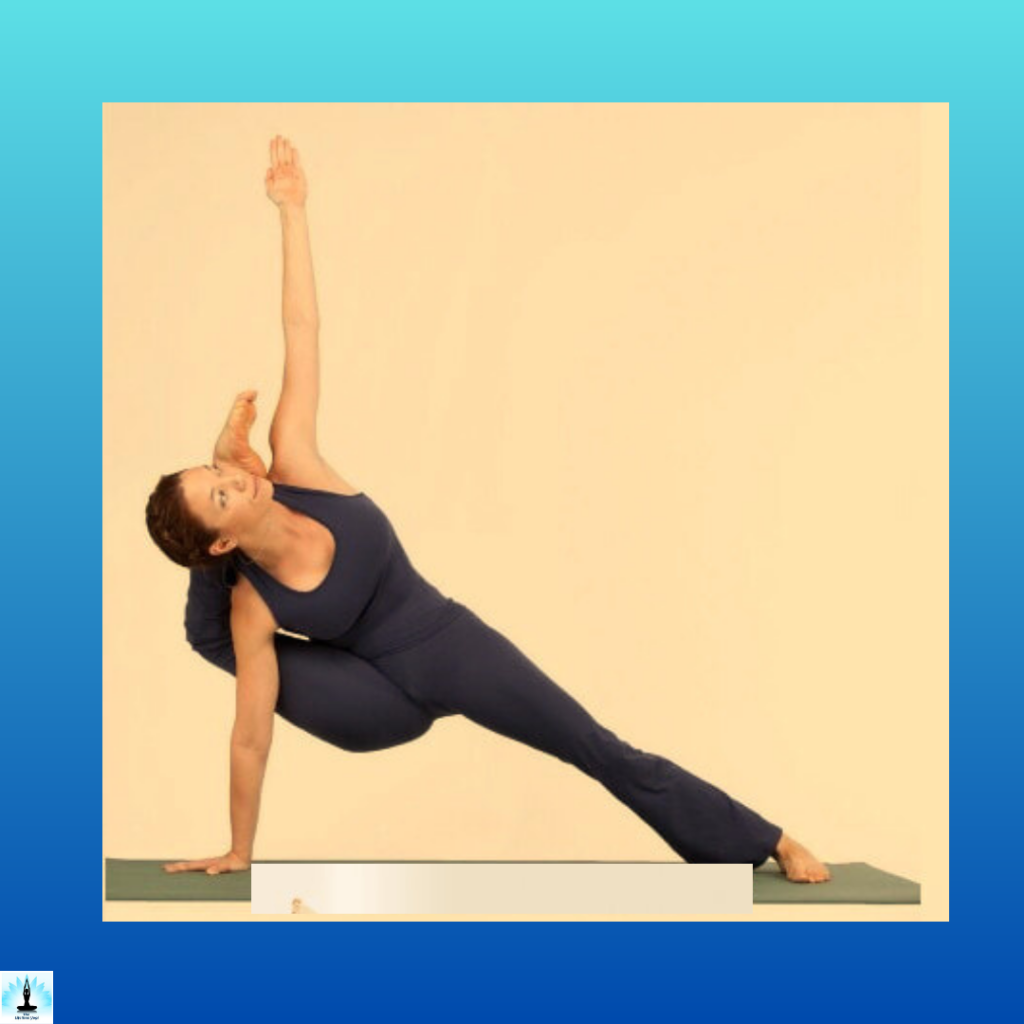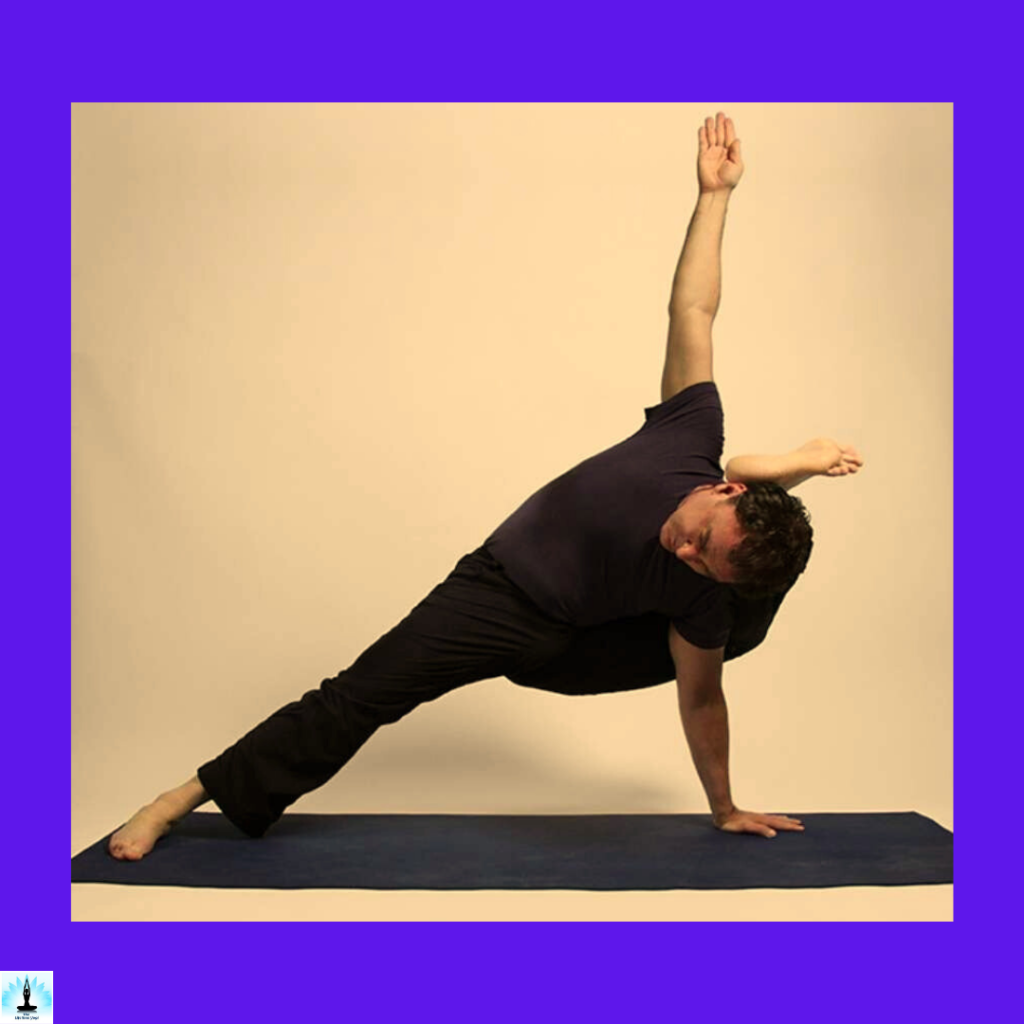Bhairavasana, also known as the “fierce pose,” is a challenging yet empowering yoga asana that deserves appreciation. This advanced posture requires strength, balance, and flexibility, making it a great way to test and enhance one’s physical capabilities.
In Bhairavasana, the practitioner assumes a deep lunge position with one leg extended forward and the other leg bent at the knee. The hands are typically placed on the ground for support, while the torso remains upright. This pose demands focus and concentration to maintain stability and find comfort in this intense position.
Table of Contents
The yogic philosophy of the Bhairavasana
Bhairava is one of the fierce manifestations of Lord Shiva, the god of destruction and transformation in Hinduism. He is depicted as a fearsome deity with a terrifying appearance, often associated with destruction and dissolution. However, Bhairava is also considered a protective and benevolent force, especially to his devotees.

The name “Bhairavasana” may have been chosen for this yoga pose due to the challenging and intense nature of the asana. In yoga practice, asanas are often named after deities, animals, natural elements, or other symbolic representations. Practicing Bhairavasana requires strength, flexibility, and balance, which could be seen as embodying the qualities of the powerful deity Bhairava.
Benefits of Bhairavasana
Strengthen And Stretch of Muscles
One of the key benefits of Bhairavasana is its ability to strengthen and stretch the muscles in your legs, hips, and lower back. This can help improve flexibility and mobility in these areas, making it an excellent pose for athletes or individuals with sedentary lifestyles.
Open Up the Chest and Shoulders
Additionally, Bhairavasana helps to open up the chest and shoulders, promoting better posture and breathing. It can also stimulate the abdominal organs, aiding digestion and relieving any discomfort in that area.
Calming Effect on The Mind
On a mental level, practicing Bhairavasana can have a calming effect on the mind. It encourages focus and concentration while simultaneously releasing any tension or stress held within the body. This makes it an ideal pose for those seeking to find balance amidst a busy or hectic lifestyle.
Flexibility of hips and thighs
Bhairavasana can help improve flexibility in the hips and thighs. As you sink deeper into the pose, you’ll feel a gentle stretch in these areas, which can be particularly beneficial for individuals who spend long hours sitting or have tightness in these muscle groups.
Enhance Digestion
Regular practice of Bhairavasana can enhance digestion by stimulating the abdominal organs. This can aid in better digestion and relieve any discomfort or bloating that may be present.
Step-by-Step Instructions of Bhairavasana (Fierce Pose)
Bhairavasana, also known as the Fearless Pose or the Destroyer of Fear Pose, is an advanced yoga posture that requires strength and flexibility. Here are step-by-step instructions on how to perform Bhairavasana:

- 1. Start by sitting on your mat with your legs extended in front of you.
- 2. Bend your right knee and bring your right foot towards your left inner thigh.
- 3. Place your left hand behind you for support.
- 4. Inhale deeply and lift your hips off the mat while keeping your left leg straight.
- 5. As you exhale, twist your torso towards the right and reach for the outside of your right foot with your right hand.
- 6. Keep pressing through the left hand to maintain stability and balance.
- 7. Gently lift and extend your left leg off the mat, parallel to the floor.
- 8. Engage your core muscles and lengthen through both sides of the body.
- 9. Hold this pose for a few breaths, finding balance and stability in Bhairavasana.
- 10. To release from the pose, slowly lower down with control and switch sides.
Remember to listen to your body throughout this practice and only go as far as feels comfortable for you. Regular practice can help improve strength, flexibility, and overall body awareness in Bhairavasana.
Enjoy exploring this powerful yoga posture as it helps cultivate fearlessness within yourself!
Advance Variations of Bhairavasana
Bhairavasana, or Revolved Side Angle Pose, has several advanced variations that can challenge experienced yogis and further deepen their practice. These variations may require increased strength, flexibility, and balance. As with any advanced yoga pose, it’s essential to warm up properly and practice under the guidance of a knowledgeable yoga instructor to avoid injuries. Here are some advanced variations of Bhairavasana:
- Bound Bhairavasana: In this variation, you add a bind to the pose, which involves reaching your top arm under your bent front leg and clasp your hands together behind your back. This variation intensifies the twist and requires more shoulder and hip flexibility.
- Eka Pada Bhairavasana (One-Legged Revolved Side Angle Pose): In this variation, you lift your back leg off the ground, extending it straight backward while maintaining the twist. This variation requires significant balance, hip flexibility, and core strength.
Therapeutic Applications of Bhairavasana
Bhairavasana, or Revolved Side Angle Pose, offers several therapeutic applications that can benefit individuals dealing with specific physical or emotional issues. The deep twist in Bhairavasana stimulates the abdominal organs, aiding in digestion and relieving digestive discomfort. The pose also helps to open the chest and shoulders, which can be beneficial for individuals with respiratory issues or tightness in the upper body. Furthermore, the stretch and engagement of the hip flexors and hamstrings can be helpful for those with tight hips or lower back pain.
Poses Related to Bhairavasana
Preparatory Poses
- Visvamitrasana (Sage Visvamitra Pose): Although not a direct variation of Bhairavasana, Visvamitrasana is an advanced yoga pose that involves a deep side stretch, similar to the twisting aspect of Bhairavasana. It requires strength, balance, and openness in the hips and hamstrings.
- Bird of Paradise (Svarga Dvijasana): Another challenging pose related to Bhairavasana, the Bird of Paradise pose combines a standing balance, hamstring stretch, and twist. It involves binding the extended leg while in a standing position, making it a complex and advanced asana.
Follow-up Poses
- Supta Bhairavasana (Reclined Revolved Side Angle Pose): This variation is done lying down and involves a deep twist while reclining. It requires a good range of motion in the spine and hips.
- Astavakrasana (Eight-Angle Pose): While not directly related to Bhairavasana, Astavakrasana involves arm balance and twisting, making it an advanced pose that complements the challenge of Bhairavasana.
Beginner’s Tip of Bhairavasana
As a beginner attempting Bhairavasana, it’s essential to focus on proper alignment and gradual progression.

- Start in a lunge position with your right foot forward and left foot back. As you twist to the right, ensure your right knee is stacked above your ankle to protect it from strain.
- Place your left hand on the floor or a block, and reach your right arm up, keeping the shoulders relaxed.
- Avoid collapsing the chest and rounding the back; instead, lengthen your spine and open your chest towards the ceiling. If you find it challenging to reach the floor with your hand, use a block for support.
- As you gain flexibility and strength, you can work towards deeper twists and more advanced variations. Remember to listen to your body, breathe deeply, and approach the pose with patience and mindfulness.
Contraindications and Cautions of Bhairavasana
Bhairavasana, like any yoga pose, may not be suitable for everyone, and there are some contraindications and cautions to be mindful of before attempting the pose.
- Individuals with knee, hip, or ankle injuries should avoid or modify Bhairavasana to prevent exacerbating their condition.
- Those with high blood pressure or heart conditions should exercise caution, as the intense twist may temporarily elevate blood pressure.
- Pregnant women should avoid deep twists like Bhairavasana, especially during the second and third trimesters.
- Additionally, individuals with back issues, such as herniated discs or spinal injuries, should approach this pose with caution, as the twist can put pressure on the lumbar spine.
Always consult a qualified yoga instructor or healthcare professional if you have any concerns or pre-existing health conditions before attempting Bhairavasana or any other advanced yoga pose.
FAQs on Bhairavasana
1. What is Bhairavasana?
Bhairavasana, also known as Revolved Side Angle Pose, is a yoga asana that involves a deep twist while in a lunge position. The pose requires opening the chest and extending one arm overhead while the other hand is on the floor or a block for support.
2. What are the benefits of Bhairavasana?
Bhairavasana offers several benefits, including strengthening the legs, improving hip flexibility, enhancing spinal mobility, opening the chest and shoulders, stimulating digestion, and promoting mental focus and balance.
3. Is Bhairavasana suitable for beginners?
Bhairavasana is an intermediate to advanced yoga pose and may be challenging for beginners. It requires a good level of strength, flexibility, and balance. Beginners can work on building the necessary foundation with preparatory poses and gradually progress toward Bhairavasana under the guidance of a qualified yoga instructor.
4. Are there any contraindications for Bhairavasana?
Yes, there are some contraindications for Bhairavasana. People with knee, hip, or ankle injuries, high blood pressure, heart conditions, or back issues should avoid or modify the pose to suit their needs. Pregnant women, especially during the second and third trimesters, should also avoid deep twists like Bhairavasana.
5. How can I prepare for Bhairavasana?
To prepare for Bhairavasana, it’s essential to warm up the body with gentle stretches and movements. Focus on opening the hips, stretching the hamstrings, and mobilizing the spine. Poses like lunges, low lunges, twists, and hip-opening exercises can be beneficial as preparatory poses.
6. Can I use props to support my practice of Bhairavasana?
Yes, props can be helpful in Bhairavasana, especially for beginners or individuals with limited flexibility. Using a block under the hand that touches the floor can bring the ground closer to you, making the pose more accessible. A strap can also be used to help with binding variations or maintaining proper alignment.
7. How do I come out of Bhairavasana safely?
To come out of Bhairavasana, release the twist gradually, bringing your hands back to the floor or block. Press through your front foot and engage the core as you lift yourself back into a standing position. Repeat the pose on the other side.
8. Can Bhairavasana help with digestion?
Yes, the twisting action in Bhairavasana can help stimulate the abdominal organs, potentially improving digestion and aiding in detoxification.
9. What other poses complement Bhairavasana?
Poses that complement Bhairavasana include other twists like Ardha Matsyendrasana (Half Lord of the Fishes Pose), Parivrtta Parsvakonasana (Revolved Side Angle Pose), and Marichyasana (Marichi’s Pose).
10. How often should I practice Bhairavasana?
The frequency of practicing Bhairavasana depends on your individual practice level and body’s readiness. As an advanced pose, it’s generally recommended to incorporate it into your practice 2-3 times a week, allowing sufficient time for recovery and progress. Always listen to your body and avoid overdoing it.
Conclusion
In conclusion, Bhairavasana, the Revolved Side Angle Pose, is a powerful and challenging yoga asana that offers numerous physical, mental, and energetic benefits. This intermediate to advanced pose requires strength, flexibility, and balance, making it an excellent practice for enhancing overall body awareness and alignment. Through its deep twist, Bhairavasana stimulates the abdominal organs, aids in digestion, and detoxifies the body.
